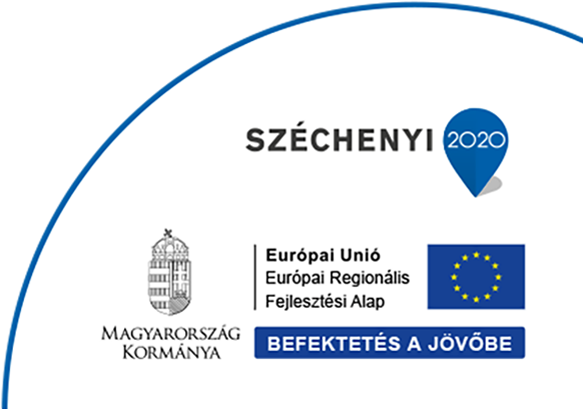
PALACE NOIR OBJECTS, SECRETS AND STORIES FROM THE HISTORY OF KÁROLYI PALACE IN FÜZÉRRADVÁNY
Following extensive renovation work carried out on the entire Károlyi Palace in Füzérradvány, the historical building houses a permanent exhibition, mainly presenting the palace hotel period of the edifice (1936–1948). The exhibition is located on the ground floor and the first floor of the building’s previous museum section, but the exhibition also continues in the service area on the ground floor, as well as in the “escape room” that can be found in the basement. The ground floor and basement spaces have been expanded with functions serving the exhibition, and are also suitable as communal spaces.
The interior design of the exhibition, as well as the transfer of diverse knowledge of construction, age, ownership and local history, has taken place in a form and with equipment that meets contemporary requirements. The elements of the exhibition consist of an individually designed installation that has been fitted on site. Following the curatorial concept, exhibition furniture with modern lines and materials was created, in strong contrast with the monumental spaces rich in restored surfaces and the large number of “reclaimed” artefacts, and furniture or replicas thereof.
We had a relatively rich unit of original artwork, but we could unearth only a fraction of the artefacts that once stood in the halls of the palace. The concept of the exhibition therefore also took into account, in part, the concept of horror vacui (the fear of empty spaces) to be presented: “some rooms” are projected with black-and-white photographs converted into motion pictures, where the former art treasures are replaced by projection. Some pieces of furniture were built at a 1:1 scale, but by colouring them (white and grey) we make a clear indication that they are only scale-based replicas of the pieces of furniture that once stood there. Some surfaces, and in particular paintings (which are now permanently lost or were destroyed in World War II, or in the 1970s for instance), are presented with a framed replica placed in their former location. To “replace” formerly coloured tapestries, we used black-and-white (slightly coloured) copy prints, where we can no longer place rugs that match (are similar to) the original.
The overall impression and atmosphere of the palace exhibition should carry the gloomy romance of Anglo-Saxon castles, the dark tones of hunting lodges in some of its halls, and the “noir” experience typical of the films of the 1930s and 1940s. All this is counterbalanced by the “talking pictures” (live-action films) introducing the rooms, a detective game loosely following Karinthy.
The exhibition in facts:
- The main theme of the exhibition titled Palace Noir, Objects, Secrets, and Stories is to evoke the life of the palace hotel in the 1930s and 1940s, with the help of archive photos, old films, newspaper articles and paintings, showing the richness of the former art collection.
- The reception area (ticket desk) welcomes visitors in the style of the former hotel. Bells, captions, and information panels evoke the atmosphere of the reception desk of the hotel.
- In the exhibition halls, the characters determining life at the palace hotel (receptionist, bellboy, hotel manager, etc.) appear on displays, providing fresh information over and over. The exhibition spaces and related stories of the palace are presented in films combining live-action footage and collage-based animation.
- In 1938, Countess – and journalist – Margit Bethlen, wrote two long newspaper articles, detailing the wealth of the palace hotel. You can read excerpts from these articles and look at photos of contemporary interiors using stereoscopes placed in the rooms.
- The original bar counter in the marble corridor and the figure of the bartender standing there, faithfully represent hotel life in the 1930s.
- In the billiard room we can read about the African hunts of Count László Károlyi and his hunting partner Count Zsigmond Széchenyi, and the exhibition also includes antique weapons from the Károlyi collection and trophies of the hunts. In addition, anyone in the mood can try their hand at playing a game of billiards.
- A scene from a film comes to life in the upstairs reception room and adjoining bathroom.
- Using a touch screen in the hotel bedroom, we can walk around the entire palace park on a 360-degree spherical image, and can virtually visit and watch excerpts of the film “Temptation” shot in the park. One of the main characters of the film was Katalin Karády, whose film costume can be seen in the boudoir.
- In the café, in addition to the original furniture of the hotel, visitors can also see more modern pieces matching in style. It is possible to “flip through” recipes and the hotel food and drink menu of the 1940s on a touch screen, or read newspapers that evoke the atmosphere of the age.
- In the board game room (escape room) located in the basement, participants can help the owners with a secret property rescue prior to nationalisation.
- In addition to taking long walks and having picnics in the palace park, visitors can have a special experience between March and October, when a so-called “spy tent” is set up, in which, with the help of a mirror and a photographic lens, a distant image of the palace appears on the table in front of us, which visitors themselves can adjust and sharpen from the inside.




















